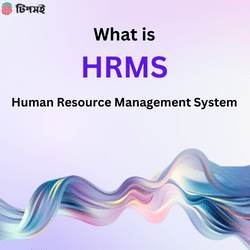HRMS stands for Human Resource Management System. This system helps companies manage their human resources tasks. It can store employee data like names, titles, and salaries. And, it manages employee benefits, attendance, and performance. Posting job openings and tracking resumes can help with recruitment and hiring.
Common Functions of HRMS Systems
HRMS systems are designed to support different functions of your HR department.
Such as-
- Payroll management
- Recruitment
- Benefits Administration
- Employee Data Management
- Employee Performance Management
- Training
- Competency Tracking
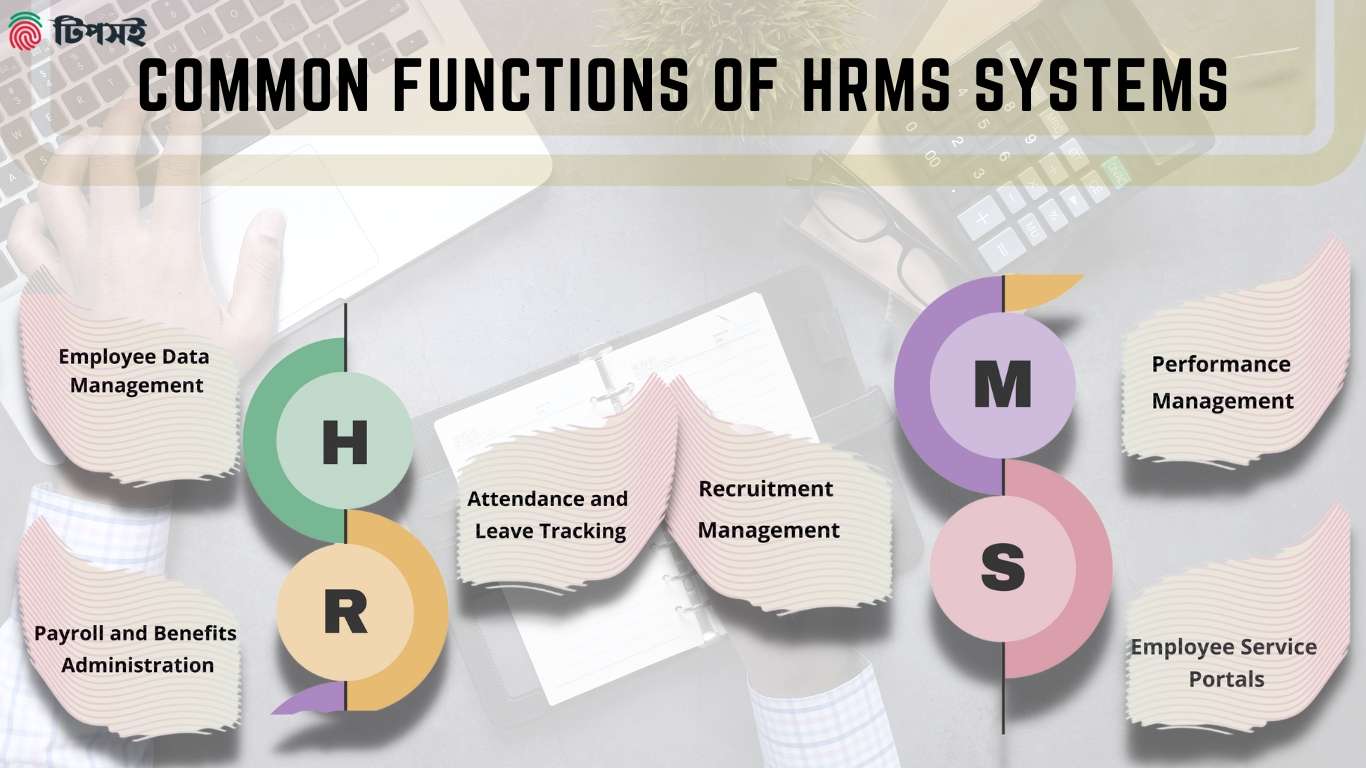
Employee Data Management:
Firstly, this system stores personal, employment, and qualification data in a central database. It simplifies HR data management.
Attendance and Leave Tracking:
Secondly, HRMSs track attendance and leave. Some examples of this tracking are
- Time-and-attendance tracking,
- Leave request management, and
- Approval workflows
Payroll and Benefits Administration:
Thirdly, HRMS manages payroll and benefits.
It includes features like,
- calculating and processing payroll
- tracking employee deductions and contributions
- managing employee benefits.
Performance Management:
Then, some of the systems include performance management features. For example,
- Setting goals,
- Tracking progress, and
- Conducting performance reviews.
Recruitment Management:
Also, this system includes recruitment management features like the following.
- Job posting,
- Resume tracking, and
- Candidate screening.
Employee Service Portals:
Last but not least, employee self-service portals allow employees to view their pay stubs, benefits, and personal information.
How HRMS Works:
The main goal is to streamline and simplify HR tasks.
Such as
- Managing employee data,
- Tracking attendance and leave, and
- Handling payroll and benefits.
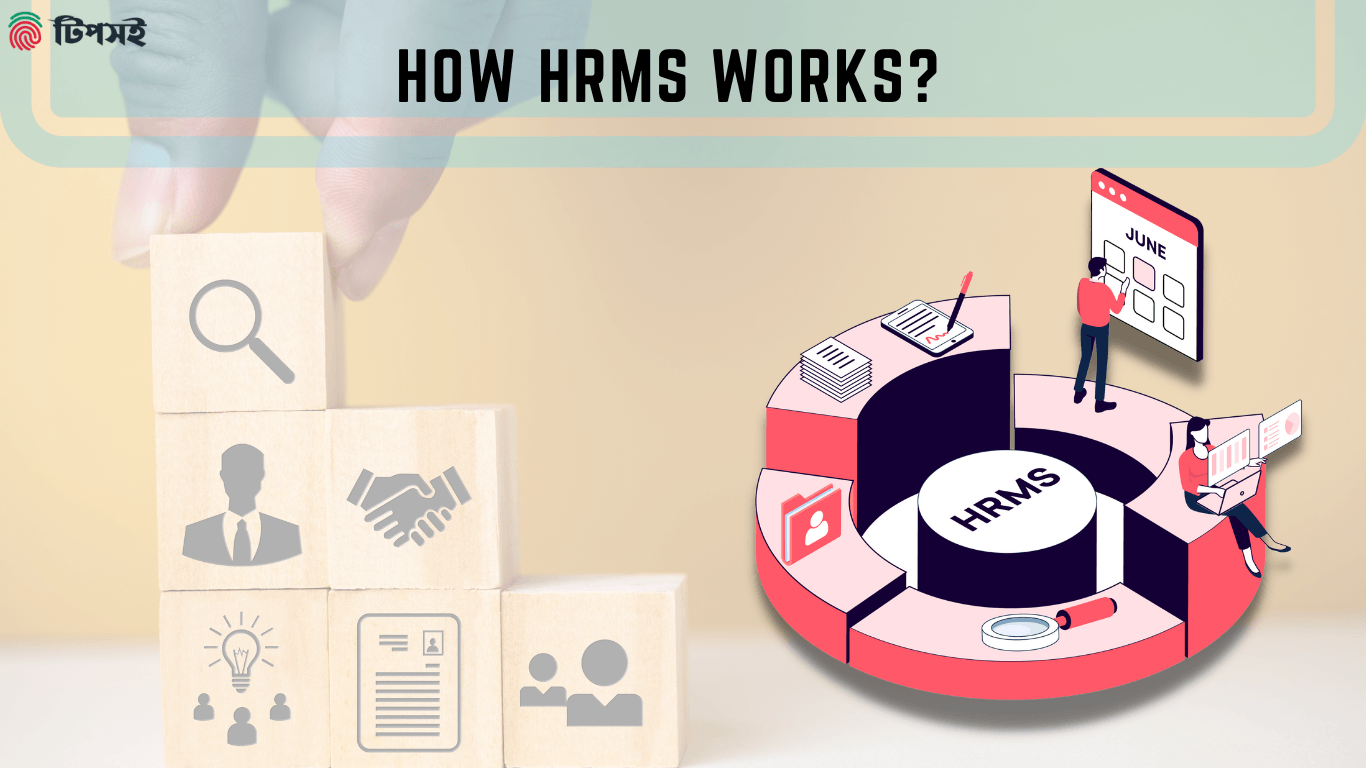
Firstly, HRMS systems typically have a centralized database. It stores all employee’s information. such as
- personal details,
- employment history, and
- qualifications.
The system makes it easy for HR professionals to access data. Also, it helps to store employee’s data in one place.
Secondly, this system includes tools for tracking employee’s attendance and leave. It can include
- time and attendance tracking,
- leave request management, and
- approval workflows
Thirdly, this system also handles payroll management. In addition to this, it can include
- calculating and processing payroll,
- tracking employee deductions and contributions, and
- managing employee benefits like health insurance and retirement plans.
HRMS Cloud Transformation:
Significantly, HRMS Cloud Transformation is the transition from on-premises to cloud-based systems. Without a doubt, this method improves security, flexibility, and cost. It involves
- Evaluating cloud-based solutions,
- Migrating data and processes,
- Testing and training employees on the new system, and
- Assessing the current system.
Reduce HR costs:
Undoubtedly, cloud transformation can save huge money waste. Naturally, cloud-based systems typically cost less to set up and maintain. In the same way, cloud transformation can accelerate HR innovation with flexibility and scalability.
Consequently, it offers organizations to help with the following things.
- The ability to adapt
- Quickly to changing business requirements,
- Stay current with HR technologies,
- Increase engagement among employees, and
- Empower them to manage their own HR needs,
- Fostering innovation
Engage employees:
Accordingly, cloud systems can engage employees with-
- Self-service portals,
- Performance management,
- Recruitment management, and
- Analytics
Naturally, these features empower employees. And so, it helps to set clear performance expectations. In effect, it attracts and retains top talent. Also, it informs HR strategy to improve engagement.
What’s the Difference Between HRMS and HRIS?
In brief, HRM stands for Human Resource Management. While HRIS stands for Human Resource Information System. HRM is the overall process of managing people in an organization. It includes the following tasks.
- Recruiting,
- Hiring,
- Training and
- Managing employee performance
- Managing employee benefits,
- Compensation, and
- Compliance with labor law.
However, HRIS is an HRM-specific technology. Surely, A software system stores and manages employee data electronically. Accordingly, it stores employee data like names, titles, salaries, etc. By the same token, it helps post job openings. And it helps to track resumes. Overall it helps managers in recruitment and hiring.
In conclusion, HRM is the process of managing people in an organization, whereas HRIS is the technology used to support it.
10 Reasons Customers Move from On-Premises HRMS to HCM Cloud:
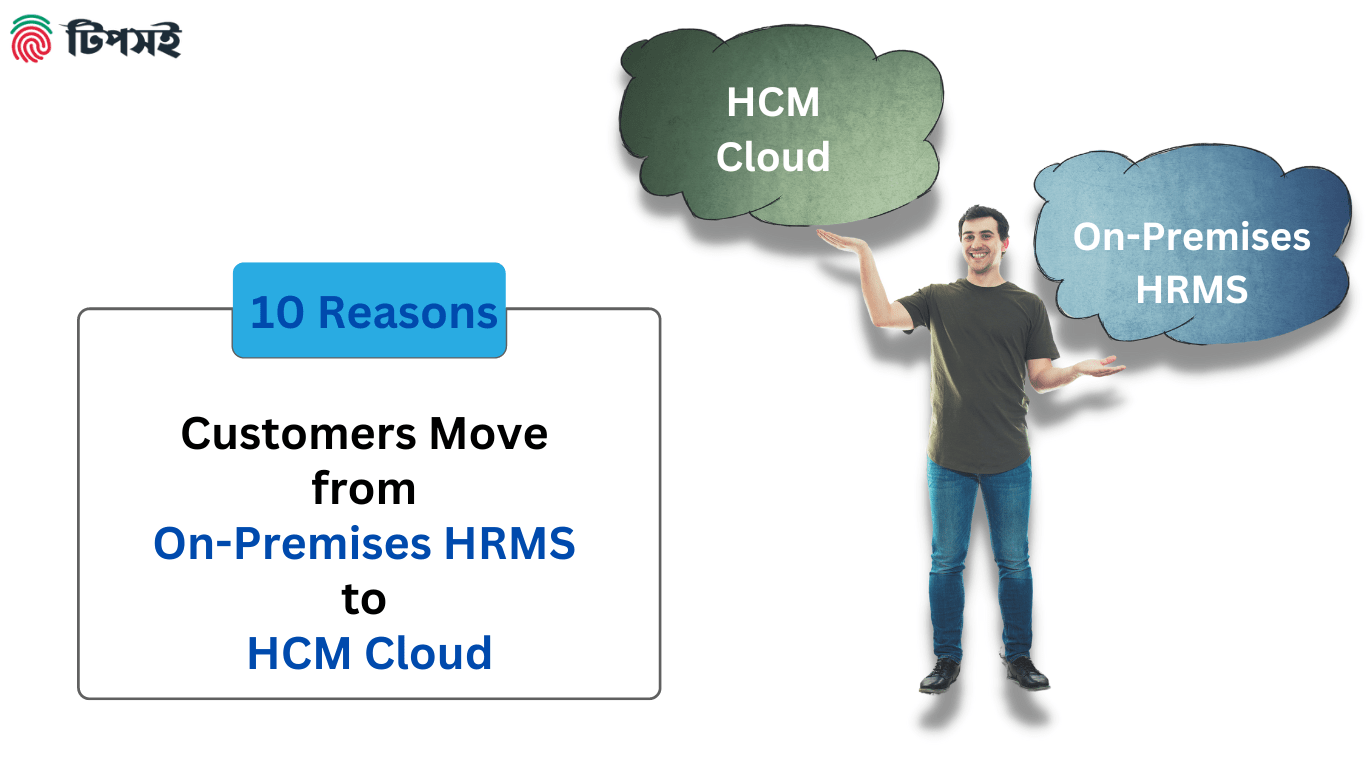
1. Personal and Modern User Experience (UX):
HCM cloud has personalized and modern UX. That is the main reason that customers may switch from on-premises HRMS to the HCM cloud. Undeniably, machine learning and AI can personalize the system for each user. Significantly, some examples are custom dashboards, reports, and navigation.
Unquestionably, UI and UX are two words that you might hear mentioned frequently in tech circles. In this case, UI refers to the User interface. Likewise, UX refers to user experience. Modern UX uses the latest design trends and technologies. Indeed, it helps to make user experiences more engaging and intuitive. However, it can make the system easier to use.
Moreover, cloud-based systems are flexible and scalable. It can entice customers to switch. Management can easily add or remove employees from the database. Also, it makes it so easier to handle the resources in the cloud. All these happen without the hassle of maintaining on-premises hardware and software. Not to mention the expense of it.
Additionally, cloud providers handle infrastructure security and compliance. It makes cloud-based systems safer.
2. Adaptable and Extensible Architecture:
Customers can confidently switch to the HCM Cloud. Because, as we know the architecture is adaptable and extensible.
3. Intelligent Application:
Intelligent applications can provide real-time data. Also, it comes up with accurate data analytics. This helps businesses make better decisions. It can analyze data from multiple sources to reveal HR processes. Including data about employee performance, and other metrics.
4. Complete Human Capital Management Cloud:
With a cloud-based system, an organization can easily manage its entire employee lifecycle. This solution can help them gain speed and agility. It is also a very flexible system. Hence, it can be integrated with several other business functions in various fields.
5. HRMS Business Value:
A good example it can be a centralized employee portal. It increases organizational satisfaction while strengthening recruitment efforts. This onboarding service lets employers post openings to their employees’ portals. In this portal, they can apply for the post with one click.
6. Human Resources Cloud Powerhouse:
In like manner, it helps customers with powerful and advanced HR management capabilities and scalability.
7. Data Security and Privacy Controls:
In addition, a cloud-based HCM system has encryption, access controls, and data backups. As a result, it protects stored data and its privacy. Besides, HCM systems protect employee data with third-party security.
8. An Engaged and Vibrant HR Community:
Above all, HCM systems can create a vibrant HR community. Due to making HR information accessible and promoting communication and collaboration. In addition, it provides a number of ways to identify and reward talented employees. Accordingly, the result promotes employee empowerment and engagement in the company’s success.
9. Proven Customer Success:
Overall, HCM systems can demonstrate customer success through
- Metrics,
- Analytics,
- Reports,
- Dashboards,
- Case studies,
- Customer testimonials,
- Compliance, and
- ROI calculations.
10. Global Reach and Capabilities:
Lastly, HCM systems can expand global reach by
- Supporting multi-language,
- Multi-currency,
- Global compliance, reporting
- All over data management
- Remote and global teams.
How HRMS Software Can Benefit an Organization:
Human resources management system software can benefit an organization in several ways:
- Streamlined HR Processes: Above all, it can automate and streamline
- Recruitment,
- Onboarding,
- Performance Management,
- Improving HR Operations and
- Productivity.
- Improved Data Accuracy: Likewise, it can manage and analyze employee data to improve data accuracy. Therefore, it helps make critical business decisions.
- Increased Employee Engagement and Retention: In like manner, it offers
- Feedback,
- Recognition, and
- Development opportunities to engage and
- Retain top talent.
- Compliance with Regulations: Wherever this software can help companies comply with labor laws. Consequently, it helps to avoid fines.
- Better Communication and Collaboration: In the same way, it can improve employee communication and collaboration. Eventually, boosting productivity and satisfaction of the employees.
- Scalability: In any case, HR processes can be aligned with the company’s current and future business needs. Especially by scaling this software up or down.
Here are some tips for identifying the right HRMS for your industry and organization:
- Understand your specific needs: First, identify the HR processes that need features needed to support them.
- Research different options: Second, find the HR processes that need automation.
- Consider scalability: Then, choose software that can scale up or down as your company grows.
- Check the level of customization: Next, find customizable software for your company.
- Integration: After that, consider a system that has integrating features. Without a doubt, it should integrate with other existing systems and tools of your organization.
- Compliance: Make sure your HRMS meets regulations and industry standards.
- Customer Support: Find a system that can provide good customer support. After-sales services like training, and maintenance.
- Test the system: To ensure the human resources management system meets your company’s needs, pilot it first.
- Look for References: Ask other companies that have used your prospective human resources management system about their experiences.
- Data Security: Make sure the human resources management system has strong data security and encryption.
Wrapping Up,
HRMS is an important tool for any organization. It helps to manage human resource functions efficiently and effectively. Human resources management system streamlines
- HR processes,
- reduces manual errors, and
- provides valuable insights through data analysis
In addition, it improves employee satisfaction. By providing self-service options and a centralized database for information. Human resources management systems improve HR operations and work environments.
How Tipsoi Can Help Managing Your HRMS?
Tipsoi
Cloud-Based HR Automation System (Customizable According To Your Need)
➲ All-in-One HR Help:
Fingerprint, RFID, face recognition? Yeah, we’ve got those, all synced up with our web and mobile apps. Attendance, shifts, leave, expenses, payroll, benefits, loans… consider it handled.
➲ World Domination (HR Edition):
Multiple offices? Remote teams? No problem. Our central monitoring puts you in the driver’s seat, giving you real-time insights into your entire workforce, no matter where they are.
➲ Mobile Punch, No Excuses:
Got employees out in the field? Let ’em clock in and out on their phones. We’ll even use Google Maps and a selfie to make sure they’re not sneaking off for a beach day. Our mobile punch feature, complete with GPS and image verification, gives your employees the freedom and flexibility they crave, while still ensuring accountability.
➲ Shift Management: Perfected
Create and manage shifts with a few clicks. No more schedule conflicts, no more confusion. Just pure, streamlined efficiency. With Tipsoi it’s easy to set up and monitor different work shifts and make sure people are working when they’re supposed to.
➲ Employee Data: Organized, Accessible, & (Dare We Say) Enjoyable:
No more digging through piles of paperwork. All your employee information is stored securely in the cloud, accessible anytime, anywhere. It’s like having your own personal HR assistant, always at your service.
➲ Versatility and Scalability:
From Fortune 500 companies to local startups, Tipsoi’s got the flexibility to handle it all. We scale with you, adapt to your needs, and empower your HR team to conquer any challenge. Whether you’re a small startup or a global enterprise, Tipsoi is designed to grow and adapt with you. We’re flexible, scalable, and always ready to support your unique HR needs. Global giants, local schools, everyone’s using Tipsoi. We’re adaptable, scalable, and ready to take on your HR challenges.
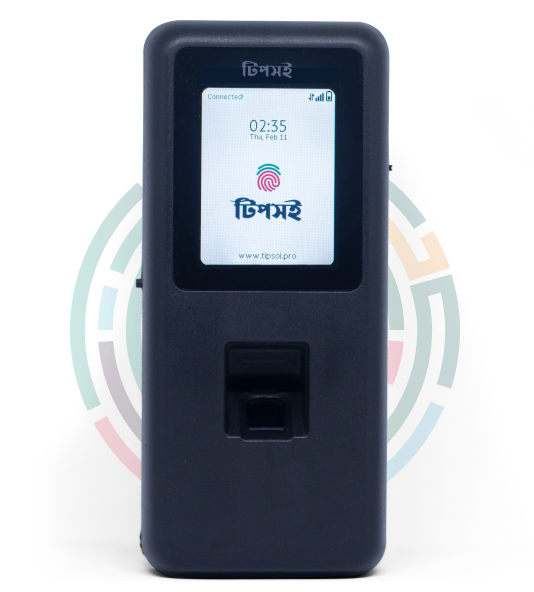
Biometric Authentication Device by Tipsoi
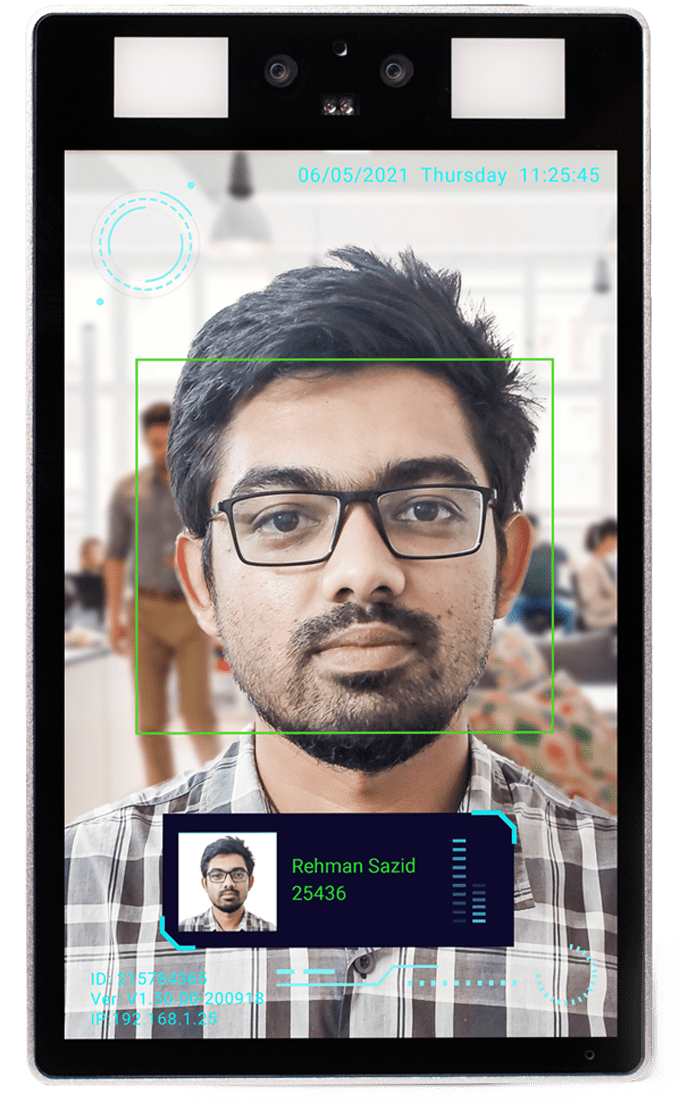
Tipsoi Fastface
Smart Attendance Solution
Inovace Technologies has introduced Tipsoi Fastface, an intelligent
Facial recognition-based device has four different options for you to choose from:
Tipsoi is a cloud-based HR platform that can be accessed from anywhere in the world. It is also customizable and affordable.
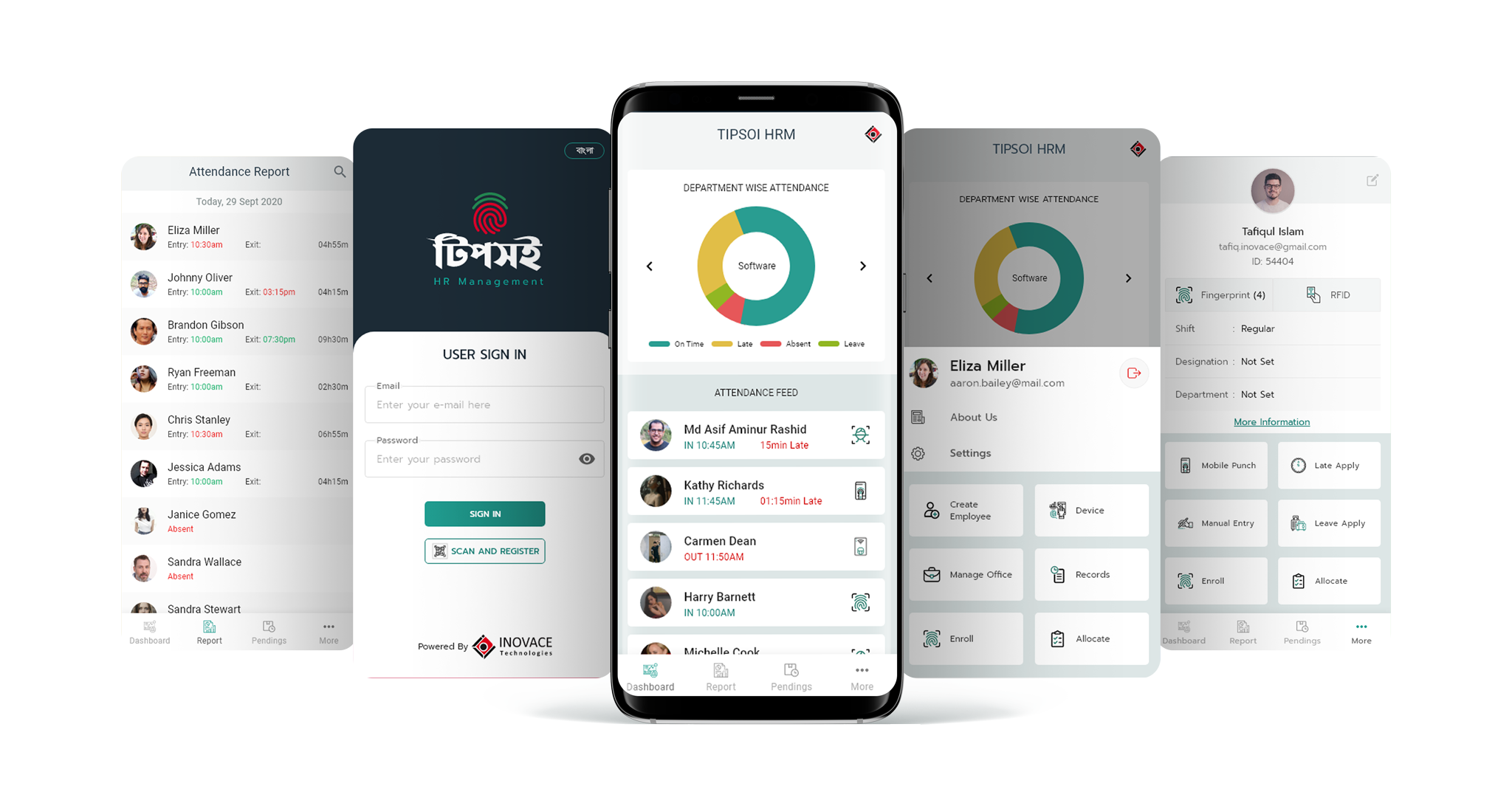
Here are some additional benefits of using Tipsoi:
- Improved security: Tipsoi uses state-of-the-art security measures to protect your data.
- Increased efficiency: Tipsoi can help you automate many HR tasks, saving you time and money.
- Improved accuracy: Tipsoi can help you track employee attendance and other data more accurately.
- Better reporting: Tipsoi can help you generate reports on employee activity, which can help you make better decisions about your workforce.
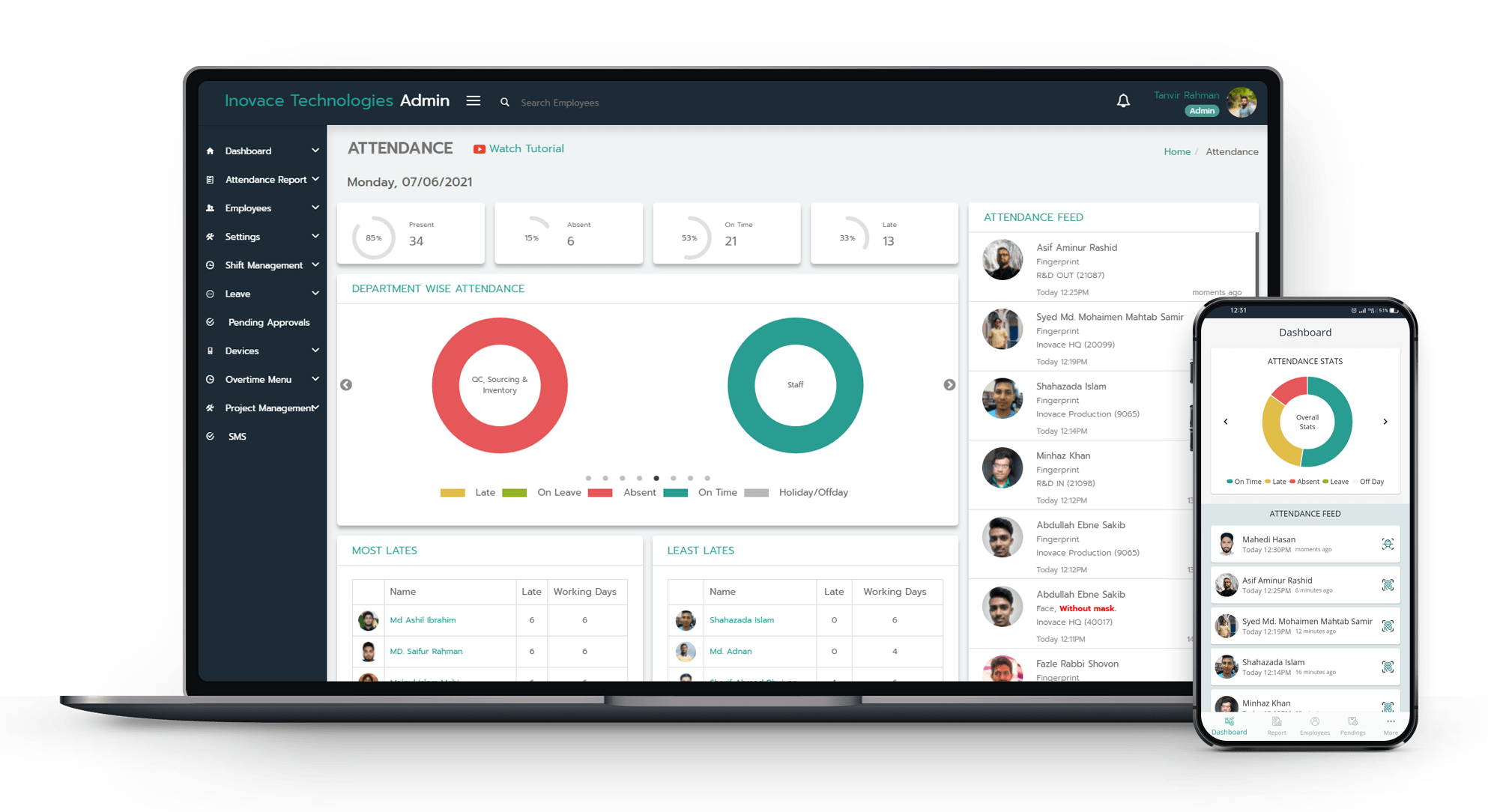
The Bottom Line: Tipsoi is the HR tech you didn’t know you needed (but definitely do). We’re the solution you’ve been waiting for – powerful, intuitive, and ready to take your HR game to the next level.
FAQs
HRMS stands for Human Resource Management System. It is a software system that helps companies manage their human resources tasks. HRMS can store employee data, track attendance and leave, manage payroll and benefits, and much more.
HRMS systems typically have a centralized database that stores all employee information. This data can be accessed by HR professionals to track attendance, leave, payroll, and other HR-related data. HRMS can also automate many HR tasks, such as calculating payroll and processing benefits.
HRMS stands for Human Resource Management System, and HRIS stands for Human Resource Information System. HRMS is the overall process of managing people in an organization, while HRIS is a technology used to support HRMS. HRIS systems store and manage employee data electronically.
Cloud-based HRMS systems can offer several benefits over on-premises systems, including:
1. Improved security, flexibility, and cost.
2. Easier to set up and maintain.
3. Ability to adapt to changing business needs.
4. Increased employee engagement.

